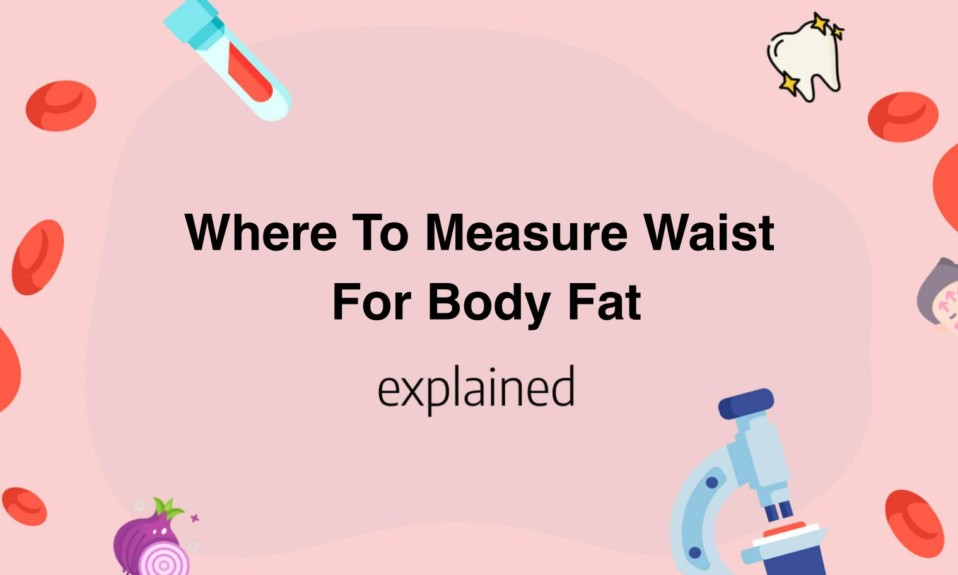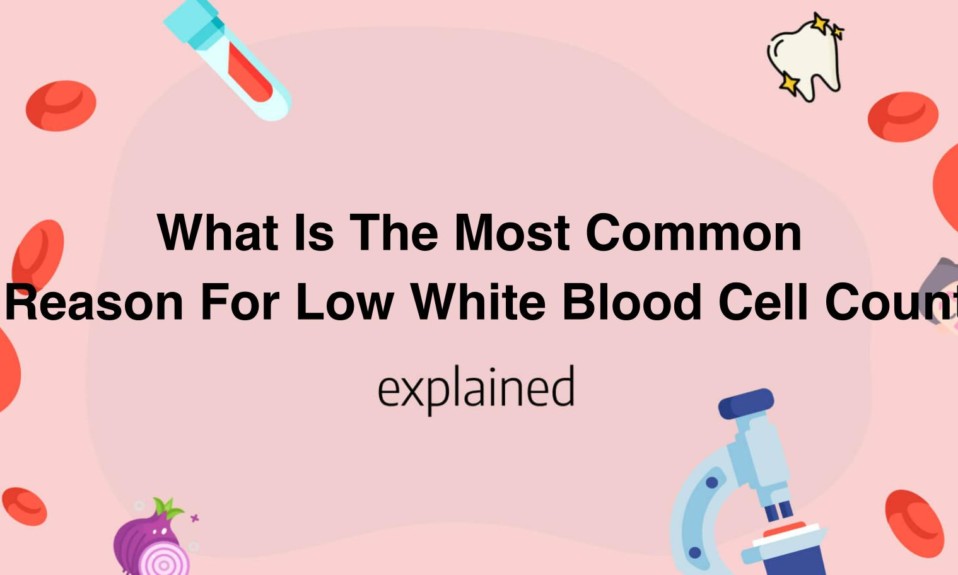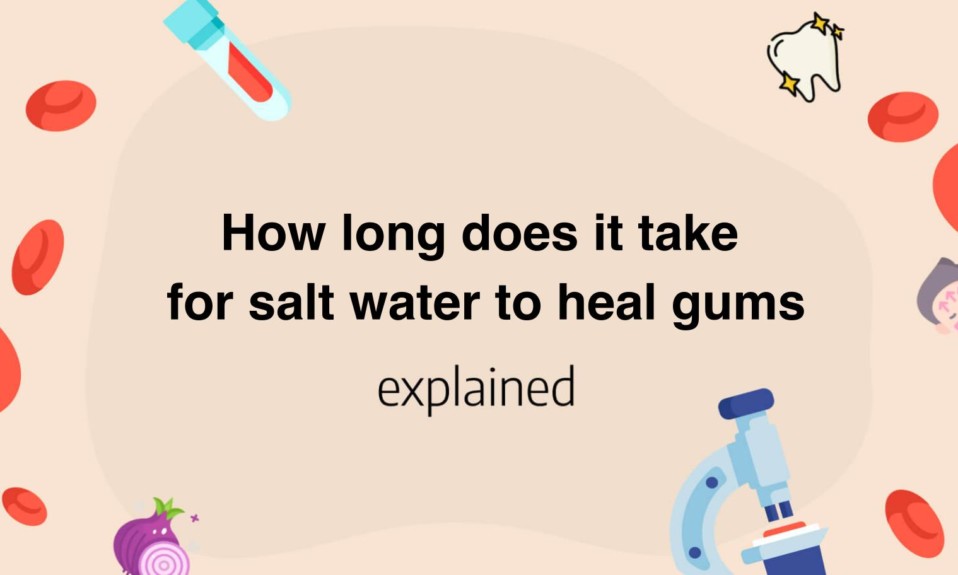When it comes to measuring body fat, it is important to know the correct waist measurement in order to get an accurate reading.
Waist circumference gives an indication of whether you have too much fat around your midsection, which can increase your risk for various health conditions such as type 2 diabetes and heart disease.
In this article, we will discuss the proper way to measure your waist for body fat and why it’s important for your health.
- An accurate way to determine body fat is to measure the waist circumference at the narrowest point.
- This point is typically located above your belly button and below your rib cage.
- Make sure the tape measure is straight and parallel to the floor.
- Relax your stomach and exhale before taking the measurements.
- A waist circumference of more than 35 inches for women or 40 inches for men indicates an increased risk of obesity-related health problems.
Discovering the Importance of Measuring Body Fat for Health
Measuring body fat is a crucial aspect of maintaining a healthy lifestyle.
It is not just about looking good but also about staying healthy from within.
Body fat percentage is the proportion of fat in relation to your body weight.
Everyone has a certain level of body fat that is essential to maintain bodily functions.
However, excessive amounts of body fat can lead to a range of health issues, including heart disease, diabetes, and high blood pressure.
There are several ways to measure body fat.
Skinfold calipers are a popular tool that measures skinfold thickness at different points on the body.
Bioelectrical impedance analysis can also be used, which involves passing electrical currents through the body to measure body fat percentage.
Other methods include underwater weighing and dual-energy X-ray absorptiometry.
Measuring body fat can reveal important information about your health.
For example, if you have a high body fat percentage, you may be at a higher risk for certain health conditions.
On the other hand, if you have a low body fat percentage, you may be at risk for different health issues.
For individuals who are trying to lose weight or improve their health, measuring body fat can be an effective way to track progress.
Additionally, it is important to note that weight alone is not a good indicator of overall health.
Someone who weighs less can still have a high body fat percentage and be at a higher risk for health problems.
Therefore, measuring body fat should be an integral part of any health and fitness routine.
In order to maintain a healthy body fat percentage, it is important to follow a healthy diet and exercise regularly.
A balanced diet rich in fruits, vegetables, and lean protein can help reduce body fat.
In addition, strength training and aerobic exercise can increase muscle mass and reduce body fat percentage.
By incorporating these healthy habits into your lifestyle and tracking your body fat percentage, you can take control of your health and well-being.

Understanding the Relationship Between Waist Circumference and Body Fat
Waist circumference is a valuable indicator for measuring body fat and assessing someone’s overall health.
A circumference measurement of more than 40 inches for men and 35 inches for women is considered high and increases one’s risk for a range of health problems, including heart disease, diabetes, and cancer.
While BMI has long been used as another measurement for weight and health, waist circumference provides a better indication of one’s body composition.
It is important to note that waist circumference alone does not indicate body fat percentage, but it does provide a general idea of how much fat is carried around the midsection.
The relationship between waist circumference and body fat is straightforward.
As body fat increases, so does waist circumference.
This is because fat is often stored around the abdomen.
One study found that an increase of one inch in waist circumference was directly linked to a 3% increase in body fat for men and a 5% increase for women.
Similarly, as body fat decreases, so does waist circumference.
People with a lower body fat percentage tend to have a smaller waist circumference.
This means that reducing waist size can help decrease body fat, and vice versa.
Maintaining a healthy waist circumference can be achieved through a balanced diet and regular exercise.
Strength training and high-intensity interval training have been shown to be particularly effective in targeting abdominal fat.
Along with losing body fat, reducing waist circumference can have other benefits, including improving insulin sensitivity and lowering blood pressure.
In conclusion, waist circumference is a critical measurement for assessing one’s body fat and overall health status.
It provides a better indication of one’s body composition than BMI alone and helps determine one’s risk for various health concerns.
People with a higher waist circumference should aim to reduce it through a combination of diet and exercise.
With consistent effort, people can decrease their waist circumference, improving their overall health and well-being.
Techniques for Measuring Waist Circumference for Body Fat
One of the most effective techniques for measuring waist circumference is using a measuring tape to take the measurement at the narrowest part of the waist, usually just above the belly button.
It’s important to take the measurement at the same location every time, as the waist circumference can vary based on where the measurement is taken.
To ensure accuracy, measure the waist after exhaling and without clothing in the way.
It’s crucial to perform this measurement regularly, as an increase in waist circumference is a key indicator of increased body fat, particularly dangerous visceral fat around the organs.
Another technique for measuring waist circumference is the waist-to-hip ratio (WHR).
To calculate the WHR, simply divide your waist circumference by your hip circumference.
A WHR of over
- 85 in women and
- 9 in men is considered high and can indicate an increased risk for health issues such as heart disease, stroke, and diabetes.
For example, a woman with a waist circumference of 30 inches and hip circumference of 38 inches would have a WHR of approximately
- 79, which is considered low risk.
It’s also important to note that waist circumference alone is not a definitive measure of health, as someone may have a small waist but still have a high body fat percentage due to factors such as muscle mass or bone density.
It’s recommended to use waist circumference in conjunction with other measures of body composition, such as body mass index (BMI) or body fat percentage measured by bioelectrical impedance analysis (BIA).
In conclusion, measuring waist circumference is a simple and effective way to measure body fat and health risk, but it’s crucial to take the measurement accurately and regularly and to use it in combination with other measures of body composition.
By doing so, individuals can gain a better understanding of their overall health and take steps towards improving their wellbeing.
Benefits of Tracking Changes in Waist Circumference for Weight Loss
Tracking changes in waist circumference can be an effective way to monitor weight loss progress.
Unlike other methods of monitoring weight loss, tracking waist circumference provides a more accurate measurement of fat loss.
This is because changes in waist circumference reflect changes in visceral fat, the type of fat that is stored around organs in the abdomen and is linked to increased risk of chronic diseases such as diabetes and heart disease.
Studies have shown that a reduction in waist circumference can result in improved health outcomes, including decreased blood pressure and improved insulin sensitivity.
One benefit of tracking waist circumference is that it provides a more visual representation of weight loss progress than just tracking body weight alone.
For example, an individual may not notice changes in their overall body weight, but may notice a decrease in their waist size.
This can be a motivating factor to continue with a weight loss program.
In addition, tracking waist circumference can help identify when changes in diet and exercise need to be made in order to continue weight loss progress.
Tracking waist circumference can also be a useful tool for weight maintenance.
For instance, an individual who has lost weight may notice their waist size increasing even if their overall body weight remains stable.
This could indicate a need to make dietary or exercise changes in order to maintain weight loss and prevent weight gain.
In fact, research has shown that monitoring waist circumference can be a key factor in successful weight maintenance.
Overall, tracking changes in waist circumference can be a valuable tool for weight loss and weight maintenance.
Not only does it provide an accurate measurement of visceral fat loss, but it also provides a visual representation of progress and can help identify when changes need to be made in order to continue weight loss.
By monitoring waist circumference, individuals can improve their health outcomes and successfully maintain weight loss in the long term.
Read also: Water Sound In Belly During Pregnancy
Where To Measure Waist For Body Fat
When it comes to measuring your waist for body fat, there are a few key things to keep in mind.
First of all, it’s important to understand why waist circumference is such an important indicator of overall health.
Research has shown that having excess fat around the midsection can increase your risk of a number of health problems, including heart disease, type 2 diabetes, and certain types of cancer.
This is because belly fat, also known as visceral fat, is metabolically active and can release harmful substances into your bloodstream.
Now, let’s talk about how to measure your waist properly.
The ideal place to measure your waist is at the narrowest part of your torso, which is usually just above the belly button.
If you’re not sure where this is, try bending to one side and noticing where your waist naturally creases.
You can also use a tape measure to find the spot where your midsection is most narrow.
When measuring your waist, make sure that the tape measure is snug but not too tight.
You should be able to slip a finger between the tape and your skin.
It’s also important to measure at the same spot every time you take measurements, as this will ensure that you’re getting consistent results.
If you’re tracking your progress over time, make sure to measure at the same time of day and under the same conditions each time.
Finally, it’s important to understand what your waist measurement means in terms of your overall health.
Generally speaking, women with a waist circumference of 35 inches or more and men with a waist circumference of 40 inches or more are considered to be at increased risk for health problems.
However, these numbers can vary depending on factors such as age, sex, and ethnicity.
If you’re concerned about your waist circumference, talk to your doctor about what it means for your individual health risk.
By tracking your waist measurement over time and making lifestyle changes as needed, you can take an important step towards better health.
You’ll also like: Why Is My Pregnant Belly Soft When I Lay Down
Is BMI a Reliable Indicator of Body Fat, or Is There a Better Option?
BMI, or Body Mass Index, has been used for decades to assess body fatness.
It is calculated by dividing an individual’s weight in kilograms by their height in meters squared.
It is easy to calculate and inexpensive to use, making it a popular tool for assessing overall health.
However, BMI does not differentiate between body fat and muscle mass.
This means that individuals with a higher muscle mass, such as athletes, may have a higher BMI and be classified as overweight or obese even though they have a low body fat percentage.
Therefore, BMI may not be a reliable indicator of body fat for this population.
Fortunately, there are better options available to assess body fat percentage, such as DEXA, bioelectrical impedance, and skinfold thickness measurements.
DEXA, or dual-energy x-ray absorptiometry, is considered the gold standard for measuring body composition.
It measures bone, fat, and lean mass, providing an accurate representation of an individual’s body fat percentage.
Bioelectrical impedance analysis is a quick and non-invasive method that uses a small electrical current to measure body fat percentage.
Skinfold thickness measurements involve taking caliper measurements of skinfold thickness at various points on the body and using those measurements to estimate body fat percentage.
While these methods may be more accurate than BMI in measuring body fat percentage, they may not be as widely available or affordable.
Additionally, they may be less practical to use on a large scale.
Therefore, it is important to consider the limitations of BMI and use it as a general guideline rather than the sole indicator of body fatness.
For example, a person with a BMI in the overweight category but with a high muscle mass and low body fat percentage may not need to lose weight.
On the other hand, a person with a normal BMI but a high body fat percentage may need to focus on losing fat and increasing muscle mass.
In conclusion, while BMI can be a useful tool for assessing body fatness in certain populations, it is not a reliable indicator of body fat percentage for everyone.
There are more accurate methods available, but it is important to consider their availability, cost, and practicality.
Ultimately, it is important to focus on overall health and not just body weight or BMI.
You’ll also like:










